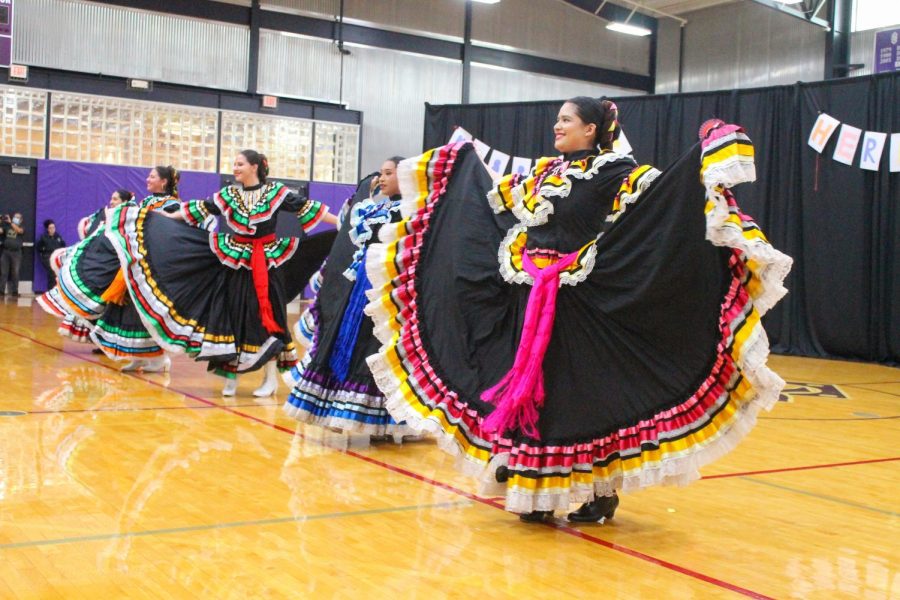More Than A Fiesta
Sion’s second annual Hispanic Heritage celebration aimed to dispel stereotypes and educate students on Hispanic culture.
PHOTO | Sophie Gromowsky
Dancers from folklórico group Grupo Folklórico Izcalli perform for students at the Hispanic Heritage celebration Sept. 22.
The bright sound of students’ laughter and excited chatter mingled with rhythmic beats and Spanish lyrics, filling the Circle Drive with a pulsating energy. The mouthwatering scent of grilled meat and savory spices wafted through the air as girls darted between the food truck queues in hungry anticipation. Phone cameras were raised to snap pictures of beaming smiles and tongues stained in shades of lime green, golden yellow and cherry red from the colorful paletas.
Students participated in Sion’s second annual Hispanic Heritage celebration during their lunch and activity periods Thursday, Sept. 22. The festivities included a musical guest, a performance by an all-female folklórico dance group, two food trucks and a piñata. The event was organized by Señora Gonzalez’s Spanish for Heritage Speakers class in honor of Hispanic Heritage Month, which is celebrated from September 15 – October 15.
“Hispanic people love family and relationship. When we talk and say our school is our family too,” Gonzalez said. “We spend 4 years, 8 hours at least every day between Monday and Friday, but it’s more. It’s kind of our second family. And so we have a fiesta and we share with our family that we love everybody and that this is for them.”
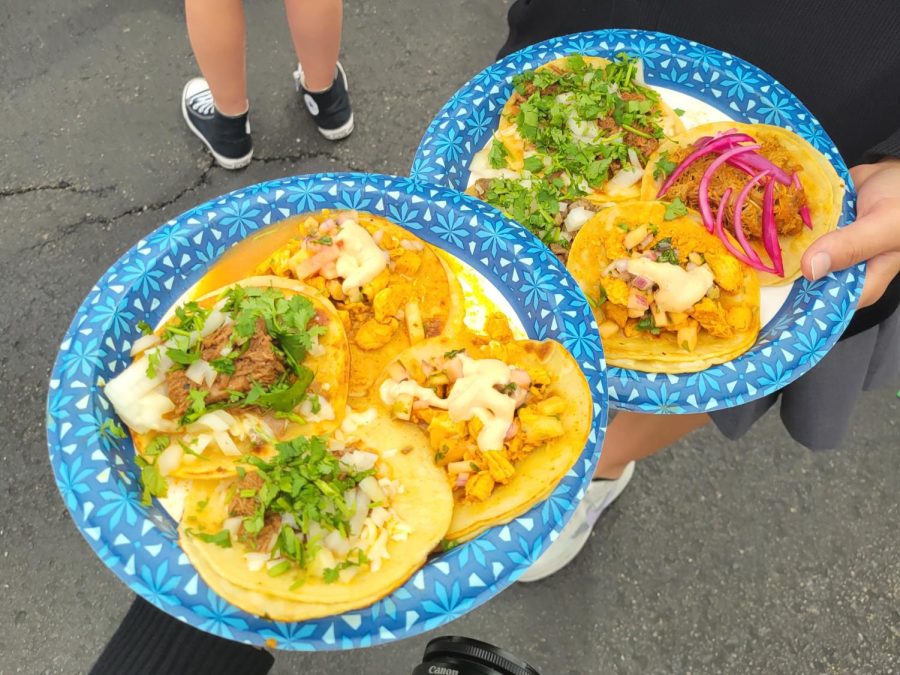
At the start of activity period, students gathered in the gym for performances by Bolivian folk artist Amado Espinoza and dance crew Grupo Folklórico Izcalli. Espinoza played several instruments originating from the Andes mountain region of South America, including the charango, a small lute that is traditionally made from an armadillo shell, and sikas, a traditional Andean panpipe. His wife Karen Lisondra led students in a dance dedicated to the Mother Earth.
“Amado Espinoza, I have known him for a long time. He loves what he does but also he loves education,” Gonzalez said. “And you saw yesterday that they were trying to integrate all the students and everybody dancing. He was very impressed with our school and the energy was amazing.”
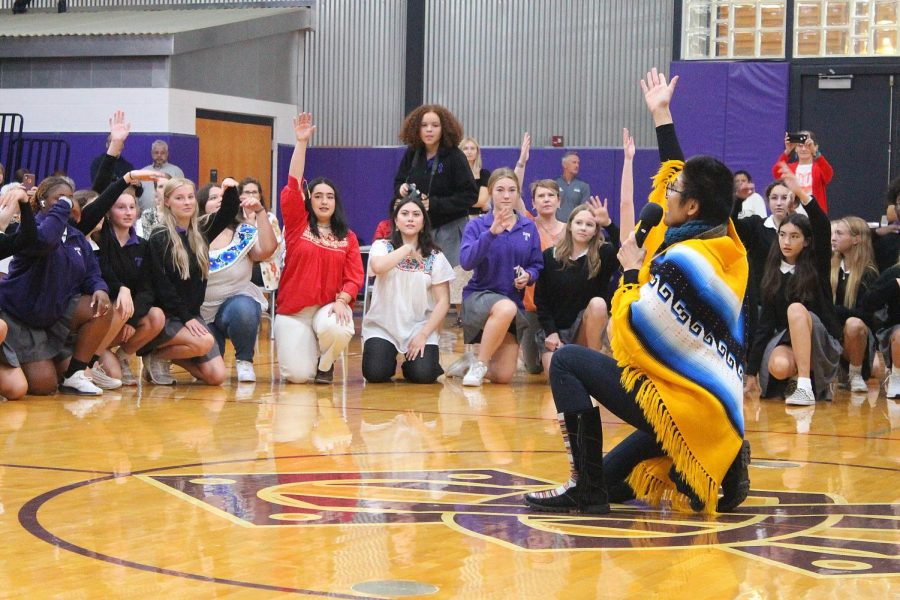
Espinoza’s performance was followed by a baile folklórico routine by Grupo Folklórico Izcalli. Baile folklórico is a traditional cultural dance that combines Mexican music and dress with ballet-style dance, according to Vanderbilt University’s Center for Latin American Studies. It is meant to express the life and spirit of the Mexican people through its movements and music.
“For the dance group I was searching and searching and I was trying to pick. There are so many, but what really was amazing about the group that came yesterday, they are just women,” Gonzalez said. “I read some articles and I said, ‘I love them. This is the one.’”
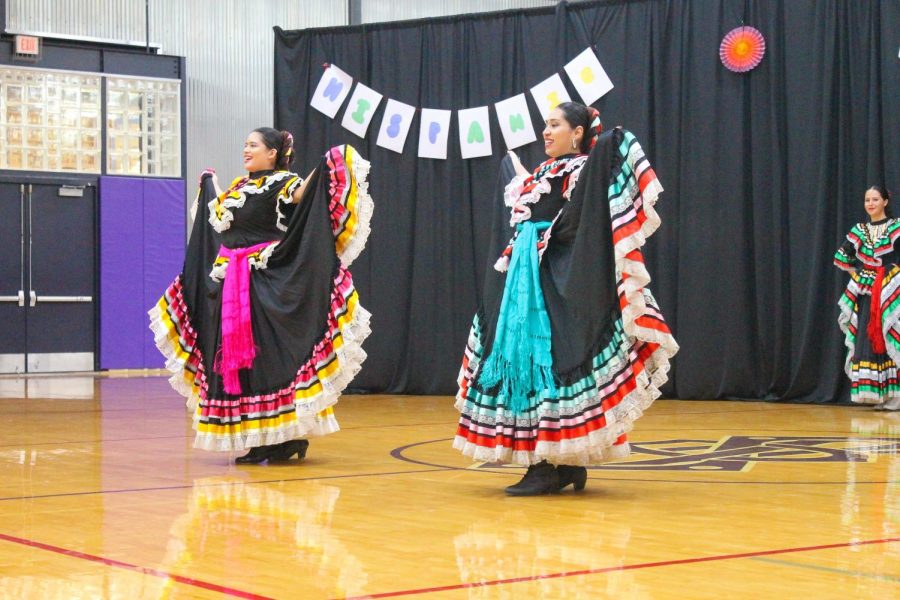
After the assembly, students proceeded outside to the Circle Drive to continue the festivities. Several teachers took turns swinging at a piñata, which burst open and showered students with a variety of Hispanic candies to sample. Students had the option of purchasing street tacos, quesadillas and Jarritos sodas from two food trucks from Taco Cacao, a locally owned Mexican restaurant. They could also choose to take part in activities at booths run by students from the Heritage Speakers class.
“One of the first things Señora told us to do was to start coming up with ideas for our booths,” sophomore Samantha Guzmán-Solis said. “We came up with three which were lotteria, bracelet-making, and making paper flowers.”
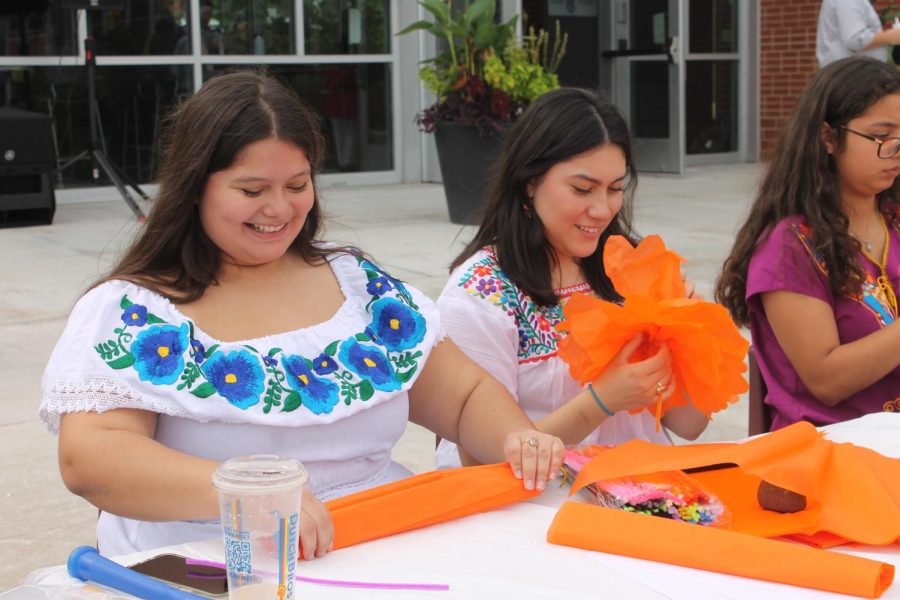
Planning for this year’s Hispanic Heritage celebration began in August during the second week of classes. This gave students’ much more time to organize in comparison to last year’s celebration, which was put together in just one week.
“We had all the help from the school because of the success that was last year and thanks to the students, everybody saying that they love it,” Gonzalez said. “So this year they said ‘Okay you can do it, it will be a new tradition,’ and we really appreciate that.”
In the early phases of planning, Gonzalez posed the question to her students: What do you like to have in your own fiesta? Then she encouraged them to go deeper, asking them to consider that this was a special fiesta that related to their identity. The theme of exploring identity in relation to their Hispanic roots is one of the central aspects of the Heritage Speakers class and one that they hoped to also communicate through the celebration.
“Heritage class is all about Hispanics feeling comfortable about their culture and their roots,” senior Chrystal Benitez said. “It’s a class where we all can talk about subjects that we may not be able to talk about to other people.”
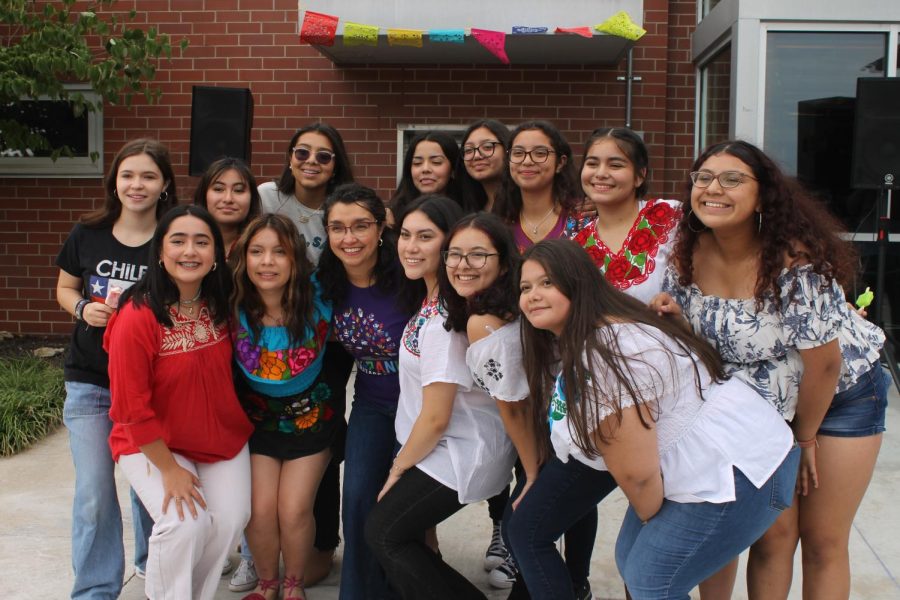
Gonzalez says that one of the most essential parts of planning a successful celebration was for the girls in the class to come together and learn to work as a team. Students in the Heritage Speakers class come from all four grade levels and represent three different Hispanic countries: Mexico, El Salvador and Chile. They constantly held discussions centered around crafting a celebration that would authentically represent the distinct cultures of not only those three countries, but of all 21 Spanish-speaking countries, each of which has their own unique collection of history and traditions.
“It’s talking and talking and talking until everybody is agreed because every country is different,” Gonzalez said. “I cannot celebrate the United States with Canada for example, no matter if you speak the same language.”
In addition to organizing activities where students would be able to have fun and try new things, the Heritage Speakers class also hoped that the celebration would accomplish the goal of dispelling some of the false assumptions that people make about the Hispanic community.
“Not everybody knows about all the different Hispanic cultures and I feel like it’s important for everyone to know since we have some Hispanic people in our school,” sophomore Denali Sanchez said. “We want to make sure that we know what their culture is like and not just use stereotypes.”
Before the assembly, a survey was sent out to the student body asking them to share what they knew about Hispanic cultures beyond stereotypes.
“All the answers were very nice, all of the students had very beautiful answers,” Gonzalez said. “But a lot of them were like, ‘I don’t know that much. I would love to learn more.’ And that point is coming for me as a teacher and for our school that maybe we need to approach this in a different way.”
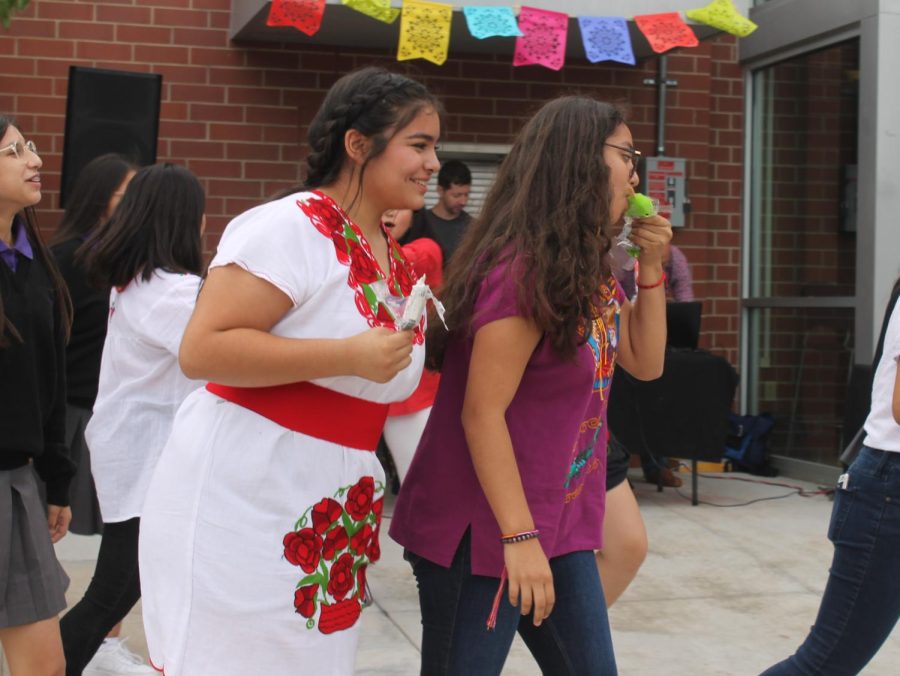
Gonzalez plans to use the responses and feedback from this year’s activities to structure the next Hispanic Heritage celebration in a way that she hopes will better educate students on Hispanic culture and involve more of the community.
“It’s a learning process like any other thing that you learn in life. And I hope it’s coming and I hope that next year we can have the community in another way so all the stereotypes are coming off,” Gonzalez said. “Hispanic people, we are involved in everything – in economics, business, politics. It’s not just fiesta, and I love it but it’s way more than that. It’s a little more deep.”



